10 Best Java Frameworks for Web Development in 2024

Key takeaways
- Java became a trendsetter and is unlikely to leave the market. Find out what’s so special about a Java web development framework before making your choice.
- Java has slipped in a rating, but it doubled its community. Explore the peculiarities of frameworks Java lays in their cores.
- Go through the top 10 Java web frameworks for web-based applications to find those that meet your needs.
- Often, a technology change is inevitable. Read more about how to prevent yourself from failure with our practical tips.
- Expert opinion: reveal recommendations on using Java capabilities for your particular case.
The “write once, run anywhere” philosophy enables Java programs to execute on any device or operating system, and managing and optimizing program memory are the two main purposes of the JVM (Java Virtual Machine). Despite Java having slipped in the Tiobe language popularity index rating dd Dec. 2022 for the first time ever, dating back to 2001, Java is still one of the most popular programming languages on the planet.
In 2022, 6.3 million web developers joined the Java community, demonstrating the most considerable growth of any language community. First, Java is the primary programming language of the most popular Android mobile operating system. Another reason for Java’s continued growth is its reliability and scalability. And since many industries (e.g., retail, big data, research, banking, finance, and the stock market) rely on Java, this language is not going anywhere. Let’s take a look at how developers can get the most with Java frameworks for web development.
Java frameworks market overview for 2024
As stated by W3Techs, Java tops the market in terms of Java framework popularity and traffic in comparison with the most popular server-side programming languages. Java is used in almost every major industry and economic sector. Such popularity provokes appearing a wide variety of Java web frameworks to cope with different programming challenges.
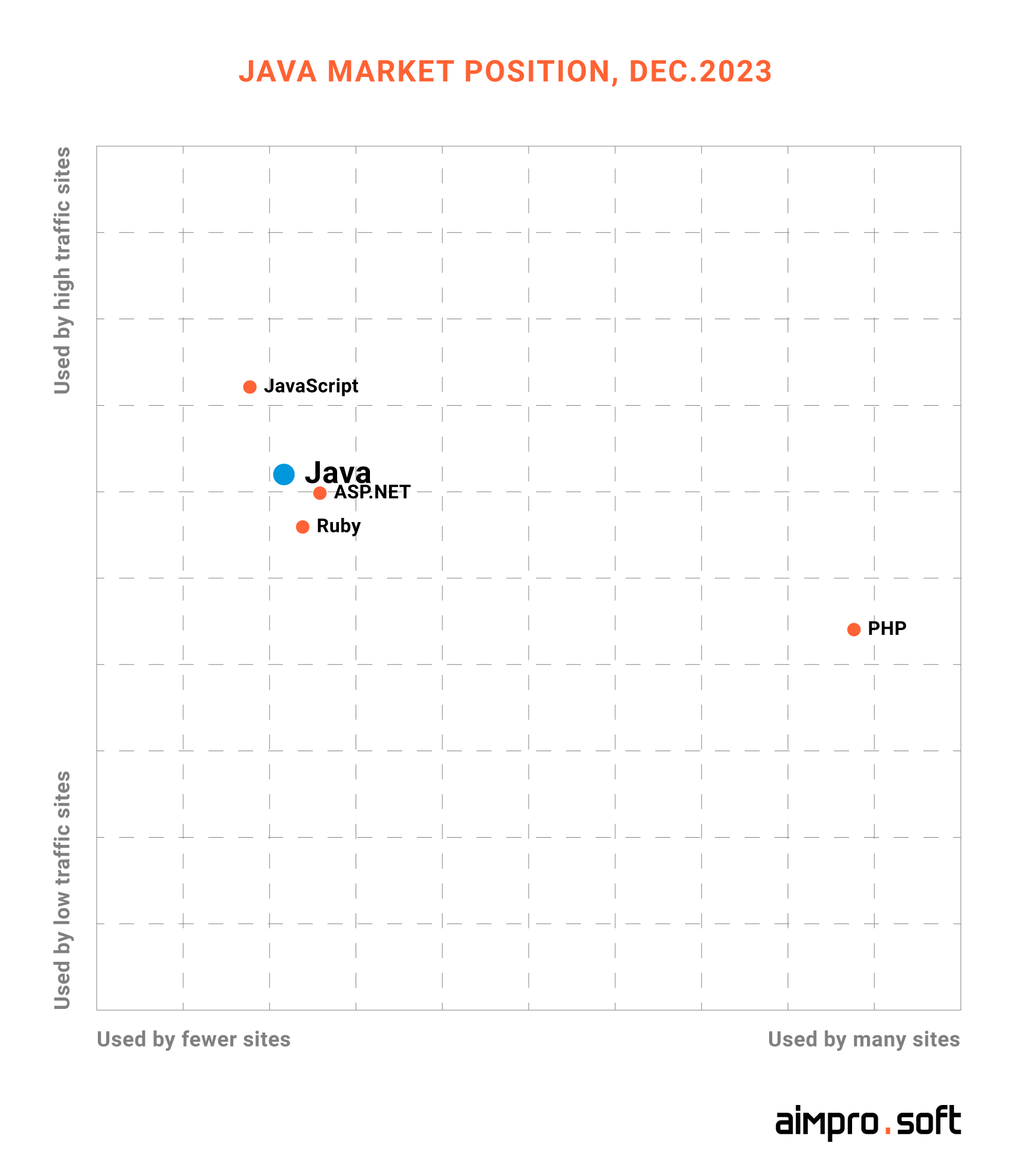
In the past two years, the global Java community has doubled from 8.3 million to 16.5 million people, taking third place following JavaScript and Python, according to SlashData. This is due not only to the increase in familiar backend and mobile development. Java is increasingly used in AR/VR projects due to the popularity of using the Android platform for this kind of project. You may surprised, but if you are wondering how to make a website like Udemy, you’ll find Java in its core, too.
The same applies to the popularity of frameworks. For example, Spring – the most popular Java-based free framework – has been on the rise in 2022, whose increase in overall usage is justified by a similar increase in Java use.
Speaking about compensation factors that affect the demand, the average cost to hire a Java developer in North America is $ 120,000 per annum, reaching $ 180,000 as the maximum. While in Eastern Europe, a yearly salary of $ 62,000 is realistic. Sure thing, this raises the question of how to hire Java developers with particular knowledge at a reasonable price. But first things first. Let’s elaborate on what a Java framework is.
What is a framework?
A framework is a component-based piece of pre-written code whose task is to be a template or skeleton, which can be reused to create an application by simply filling with your code as needed, which enables developers to program their application with no overhead of creating each line of code again and again from scratch.
Speaking of functionality, not all frameworks serve the same purpose. When choosing a framework, it is right to base your choice on the needs for solving business problems, not on your personal preferences.
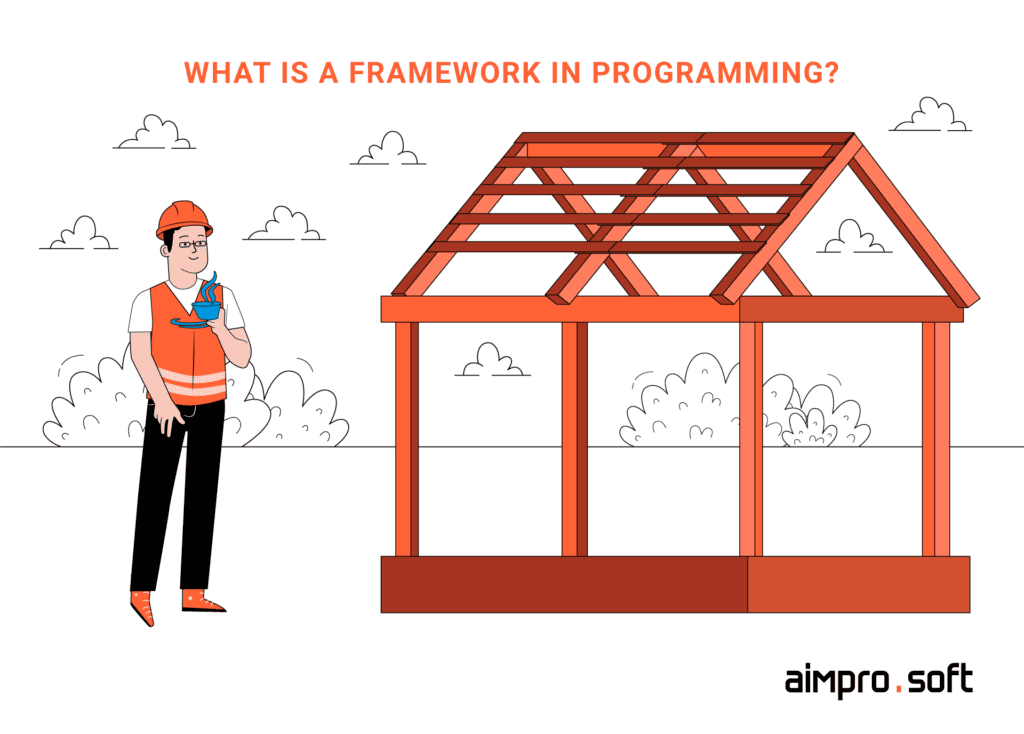
The functions of frameworks can be divided into the following:
- Frontend-focused and backend-oriented, such as working with databases
- For creating full-featured web applications in Java
Now, if you are searching for the best frameworks for Java in the market that help you develop a website easier, faster, and better than Java is always there for you with a large number of frameworks, and most importantly, most of the Java frameworks for web application development are free and open-source.
Let’s go through the most worth overviewing ones.
Top Java frameworks for startups web development
We have dozens of frameworks for different purposes, but there is a need to learn all of them. Some you will start to learn as you need to, but there are a number of frameworks to be mastered first. But in this case, a natural question arises: which Java framework is best for web development? Let’s find out.
Spring
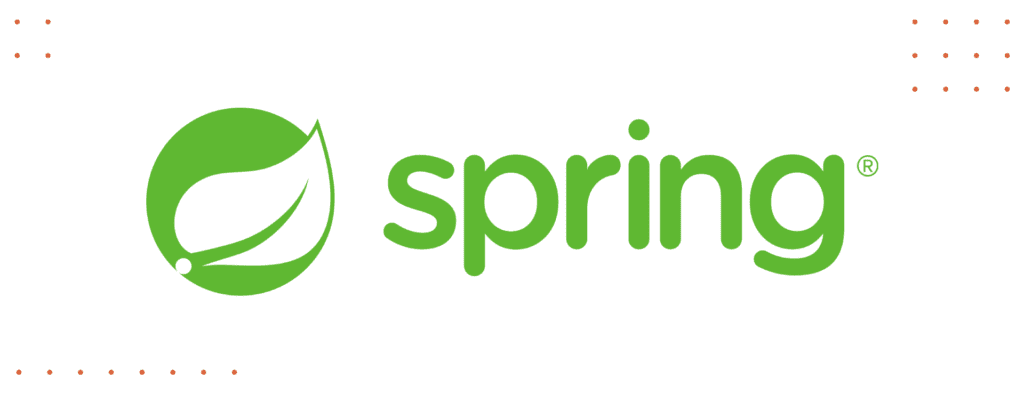
Spring is rightly referred to as the best Java framework for web development. It is a robust, lightweight, and the most popular application Java frontend framework, affecting Java’s improvement in speed, easiness, and safety in usage. It designs and manages the lifecycle and configurations of application objects. Spring is popular among the large enterprise segment when repeatedly becoming the number one choice of professional developers. It is perfect for developing scalable, secure, and robust client-oriented web applications.
Spring is ideal for creating enterprise Java applications. It allows developers to focus on the business logic of the application. A pair of Spring MVC (Model View Controller) and Spring Cloud transforms Java into a modern, reactive, and cloud-ready tool to create high-performance, complex web applications.
| Advantages | Disadvantages |
|---|---|
| ● focuses on providing flexibility ● lightweight, which allows triggering without any server ● uses JDBC for better performance ● fosters XML, annotation-based configuration, and modularity ● with backward adaptability and easy testability good for all architectural layers used in web app development ● uses the POJO model when writing classes, which is a very lightweight structure ● allows you to freely associate modules and test them easily ● supports declarative programming ● avoids manual dependency management ● supports different configuration methods ● flexible and comprehensive third-party libraries for building absolutely any web application ● features a large ecosystem, a supportive community, and various Spring tutorials ● developers have to focus only on business logic | ● may be complex for newcomers ● the lengthy preparation procedure, which caused the emergence of Spring Boot |
Used by: Zalando, BlaBlaCar, Zillow, Netflix, Amazon, Google, Microsoft, etc.
Let’s discuss how our capabilities can match your needs.
CONTACT USHibernate
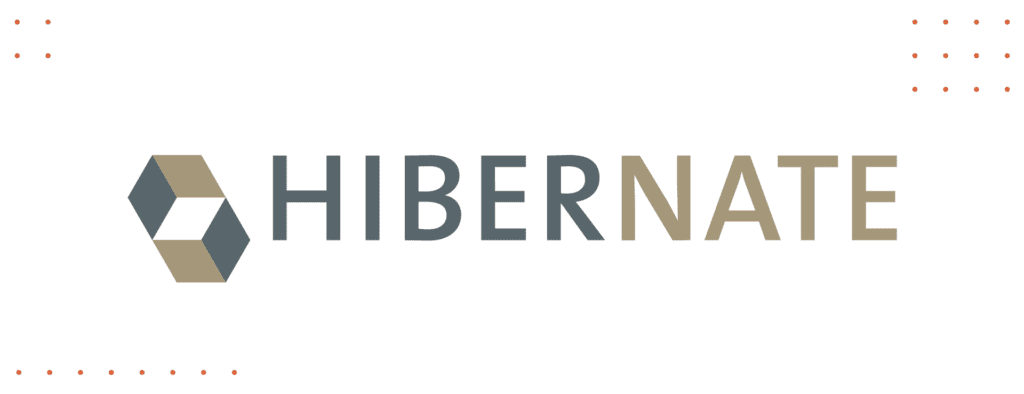
Hibernate is an open-source ORM framework for Java web development, compelling and has high-performance ratings. It is an object-relational mapping framework that creates communication between the tables in the database and the Java classes and vice versa. This saves developers a considerable amount of unnecessary, routine work and, consequently, makes mistakes.
Since Hibernate was designed for relational databases, more recent versions now support NoSQL data stores, too. Additionally, it features a mapping editor and also such top-notch developer tools like a database reverse engineering tool and a Hibernate console.
| Advantages | Disadvantages |
|---|---|
| ● lightweight and easy to scale up, modify, and configure ● simple API for writing and fetching Java objects to/from the DB ● complex data manipulation with less coding ● fetching strategies minimize database access ● works without an application server ● used for RDBMS and the NoSQL database ● great command-line tools and IDE plugins | ● lower performance for complex queries ● complex for mastering by newbies ● steep learning curve |
Used by: Platform, Backbase, Dell, Trade Republic, DAILYHOTEL.
Google Web Toolkit
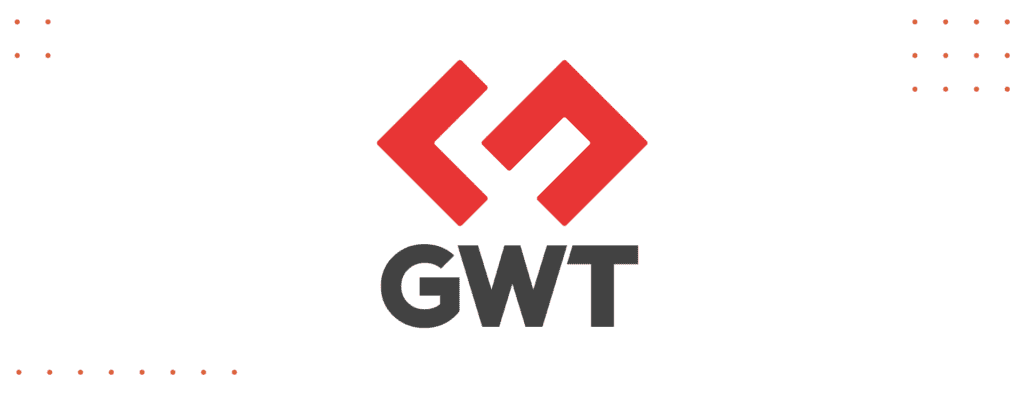
Google Web Toolkit (GWT) is an open-source toolkit released by Google to help developers write Java code and compile it into JavaScript to run in browsers. You can create complex web applications without practical experience with front-end development languages such as JavaScript. This Java web application development framework includes a number of unique features, such as UI abstraction, cross-browser compatibility, and internationalization.
| Advantages | Disadvantages |
|---|---|
| ● includes JS files that can work with the major browsers’ Java source codes ● doesn’t require frontend skills to create UIs that are user-friendly ● allows creating cross-browser compatible apps with automatically produced JS code ● enables programmers to create Java client-side apps ● AJAX apps can be addressed in Java thanks to its extensive widget library ● supported by a team of experienced Google programmers | ● difficult to learn for beginners ● doesn’t support some features of modern browsers ● non-semantic HTML code generated by the frontend code ● requires much memory to run it in dev mode high compilation time |
Used by: Boeing, Stellar Science, ECR Software Corp., Lockheed Martin
Tapestry
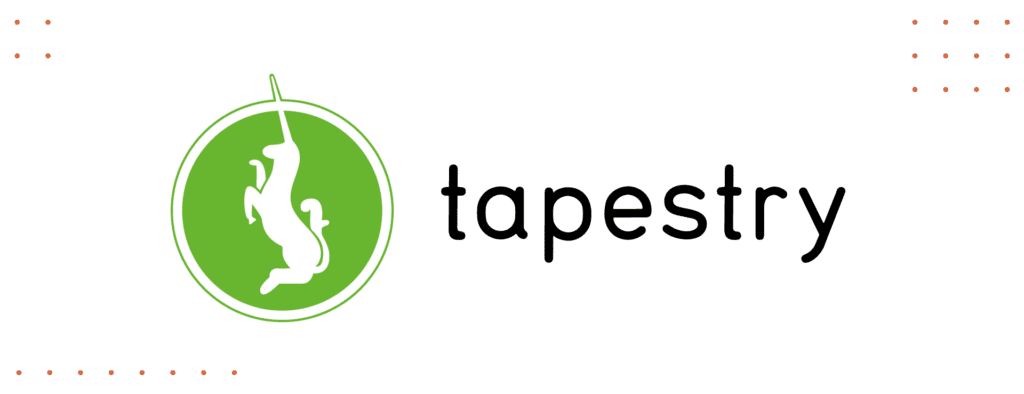
Tapestry allows Java developers to build dynamic, reliable, and highly scalable web applications. It works in any servlet container or application server since it enhances and expands upon the standard Java Servlet API. Any application server can run Tapestry, and it integrates quickly with all back ends, such as Spring, Hibernate, etc. Following the convention-over-configuration paradigm, It uses naming conventions and annotations for configurations.
| Advantages | Disadvantages |
|---|---|
| ● all components are simple POJOs ● no dependencies on other libraries ● hot reloading of the code ● Ajax support and great exception reporting capabilities ● extensive library of built-in common components | ● inability to add new components to an existing page dynamically ● limitations with service reloading ● running multiple applications are not supported |
Used by: Finance Active, sigh, Beckon
Dropwizard
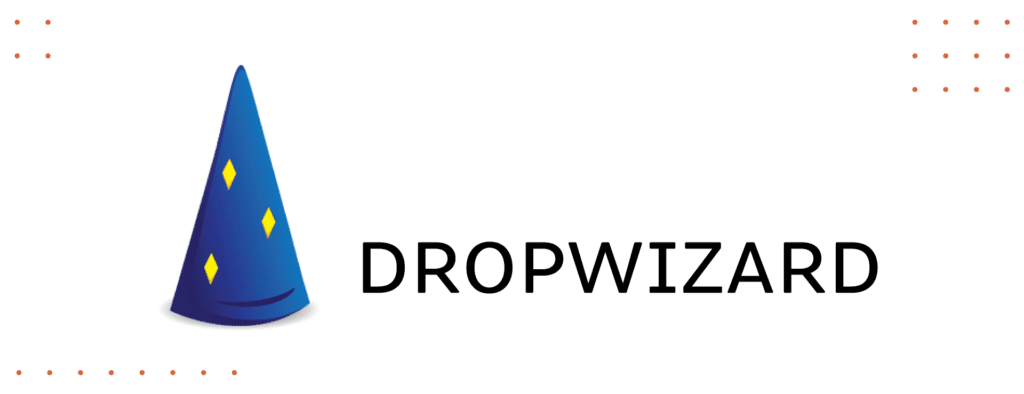
Dropwizard is a powerful Java framework highly optimized for developing RESTful services. In Dropwizard, the definitions of a library and a framework are blurred. Its objective is to offer dependable, practical implementations of each requirement for a production-ready web application. Your application remains nimble and focused because this functionality has been abstracted into a reusable library, which lowers. JSON eliminates the need to write code for metrics and configurations.
Dropwizard saves your effort on extra features like configuring metrics or writing logging code. Instead, you can maximize efficiency by concentrating on the main business logic of your program. Dropwizard is frequently described as the best Java web framework that is operations-friendly because of this.
| Advantages | Disadvantages |
|---|---|
| ● scalable ● simple to set up and get started with ● provides many features without becoming too complicated ● includes mature Java libraries ● has good conventions ● provides extensive documentation | ● assumptions always change distribution and monitoring are complex the distributed environment needs to be tested always |
Used by: CRED, UpWork, Wayfair, Samba Tech, Yammer
Grails
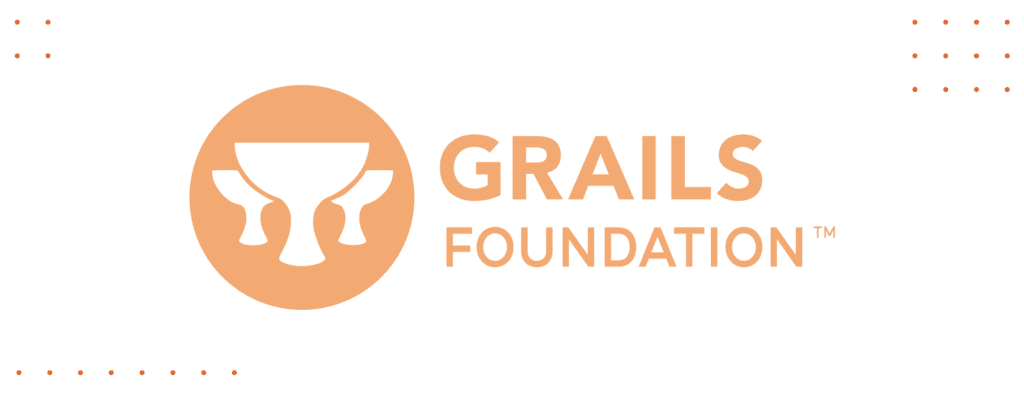
Grails is one of the most popular Java frameworks for web development for creating web applications written in the Groovy scripting language with a Java-like syntax that works on the Java platform. Its ideology is similar to Ruby on Rails. The mission of the web application framework was to attract users’ interest in the Java platform. It made it possible to build web applications easily and flexibly, not previously available in Java development.
There are plugins for Grails that extend its capabilities, such as Acegi for handling authorization and authentication. Grails follows the MVC principle and offers convenient tools for linking URLs to controllers, localizing the application, validating model data, and much more.
| Advantages | Disadvantages |
|---|---|
| ● built on top of Spring Boot ● seamless integration with Java libraries and tools ● convention over configuration (with sensible defaults) ● async capabilities ● application profiles for React and Angular ● good documentation and tons of learning materials | ● an interpreted language increases weight ● might have effect on performance (could work a bit slower) ● requires practical skills of Groovy to write Grails applications ● complicated integration process |
Used by: LinkedIn, Biting Bit, TransferWise, EasyCrédito, PedidosYa
Vaadin
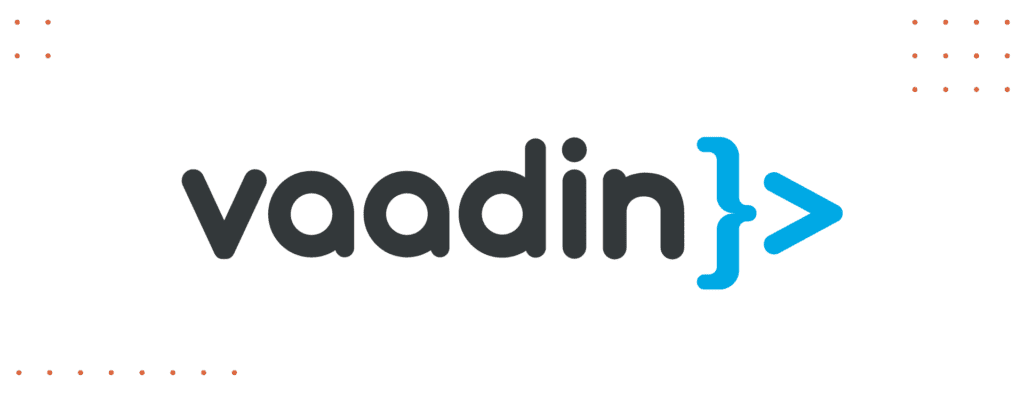
Vaadin is a UI framework with a server-side Java programming model related to Java frontend frameworks, where all UI logic and state are located on the server, and only the UI component code is executed in the browser. The server-side approach allows the UI development as a desktop Java application with direct access to data and services on the server. The Vaadin engine renders the server-side application UI in the browser and implements all the details of the client-server exchange.
Building an enterprise web application involves many moving parts. Vaadin simplifies creating an enterprise web application thanks to an integrated Java web application development platform. All the necessary components, frameworks, and tools needed to create robust, secure business applications with a great UX are available in Vaadin.
| Advantages | Disadvantages |
|---|---|
| ● direct access to the DOM (Document Object Model) from the Java Virtual Machine ● displays the UI in the browser ● AJAX interaction between the browser and the server ● Java code is easier to write and debug ● existing Java libraries and tools (IDEs, compilers, testing) can be used ● no need to develop web services better security | ● requires a lot of memory on the server for the UI view ● difficulty with solution scalability Java API is required while widgets development |
Used by: Associated Bank, T-Mobile Polska, Generali Hellas, CAS genesisWorld.
JHipster

JHipster is a relatively young open-source Java framework that combines Spring Boot, and client-side frameworks like Angular, React, and Vue to make a rapid web application development Java. JHipster provides two types of architectures: monolithic (frontend and backend are implemented in a single application) and microservices (frontend and backend are implemented separately).
| Advantages | Disadvantages |
|---|---|
| ● mobile app support for Ionic and React Native ● architecture with cloud-native principles ● good test coverage ● supports infrastructure as a code ● extremely speeds up development ● support for many frontend frameworks and technologies ● built on top of Spring Boot ● has multiple deployment options ● strong, active community | ● auto-generated code volumes may confuse offhand ● no typical Angular CLI ● lack of examples and tutorials ● complex documentation |
Used by: Adobe, Bank Of The West BNP Paribas, Accenture, Accor Live Limitless
Play
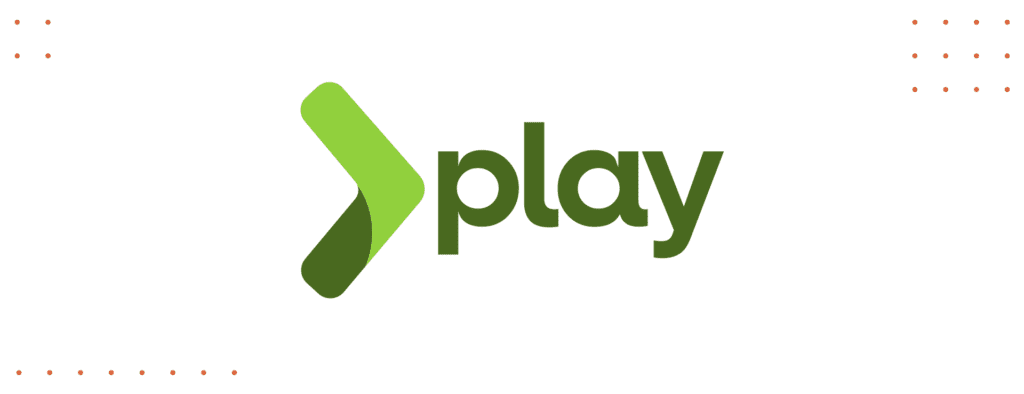
Play Framework combines productivity and performance for creating scalable online applications in a quick and easy way using Java and Scala. Play’s architecture is lightweight, stateless, and is the best Java web framework. Play, which is based on Akka, gives highly scalable applications predictable and low resource consumption (CPU, memory, threads).
Play has a “just hit refresh” workflow and built-in testing capabilities, making it developer-friendly. Play’s stateless and non-blocking architecture enables applications to scale predictably. It is a perfect fit for contemporary web & mobile applications because it is RESTful by default and includes assets compilers, JSON, and WebSocket support.
| Advantages | Disadvantages |
|---|---|
| ● easy to work with play-JSON and play-ws ● many components are separate dependencies ● great test libraries ● support from Scalatest, Specs2 ● hot swapping of class files that improves the development speed ● easy end-to-end testing ● support for FluentLenium ● built around a functional programming core ● hot swapping of class files | ● backward incompatibility ● a bit volatile at times ● has a very steep learning curve ● relatively recent move to dependency injection by default |
Used by: LinkedIn, Glovo, Coursera, Zalando, Accenture, Deloitte
Spark
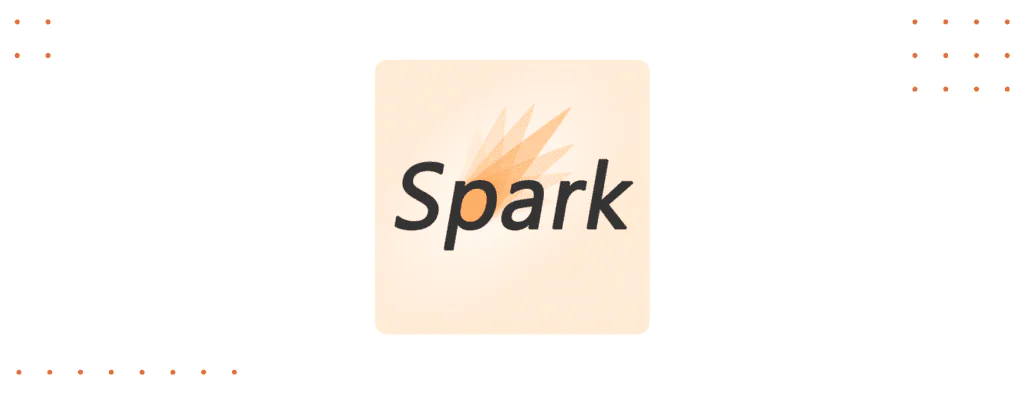
Spark is a less verbose style of coding Java/Kotlin applications pursuing the aim of rapid development. Spark allows using fewer templates while developing Java/Kotlin apps. With Spark, developers can enjoy a REST API ready to serve JSON in a few lines of code. Being a microframework, Spark excels at handling microservices. It supports a wide range of template engines but is primarily used for building REST APIs. Using Spark means developing an application quickly, like with Node.js, but getting all the benefits of running them on the JVM.
Up and running is possible in just a few minutes. It runs on the Jetty web server built into the framework and can also be used with other Java web servers. Using Spark to create REST APIs is the most common server-side use case. It also performs well in web applications with high traffic of 10,000 users per day or more, for example, Pinterest, and has proven to be a good fit working with data distribution in big data cases. You can read more about how to make a website like Pinterest here as well.
| Advantages | Disadvantages |
|---|---|
| ● lightweight for rapid development ● has a dynamic nature ● requires minimal boilerplate code ● allows structure the app in any style you want ● has declarative syntax ● with great fault tolerance | ● no file management system ● not enough tutorials and guides ● lacks algorithms |
Used by: Revolut, Payjinn, 1000mercis, Kasa Smart, Waltz.
Blade
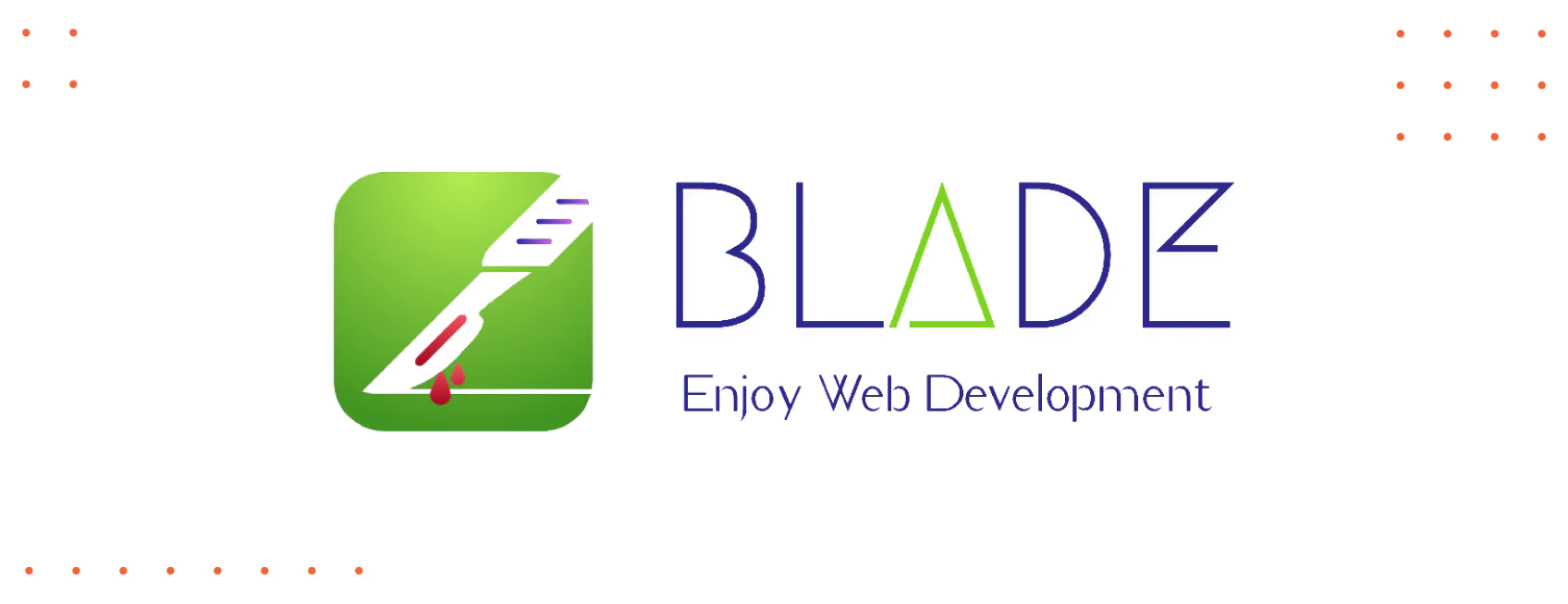
Blade, a lightweight and high-performance Java framework, allows developers to create fast web applications efficiently. Its creators have focused on simplicity and elegance, aiming for the user to master the entire framework in a single day. Following the MVC (Model-View-Controller) design pattern, Blade has a well-designed structure that minimizes dependency on third-party libraries and avoids unnecessary layers. Built on Java 8, the framework seamlessly integrates the Netty web server and templating engine. Notably, Blade has a minimal footprint: its source code is less than 500kb.
Blade offers a RESTful-style routing interface, which makes it easy to work with routes. Deployment is easy, and projects on Maven and Gradle are supported. The framework also has built-in security features such as protection against CSRF (Cross-Site Request Forgery) and XSS (Cross-Site Scripting). In addition, Blade supports plugin extensions and makes it easier to utilize webjar resources.
| Advantages | Disadvantages |
|---|---|
| ● no external dependencies ● easy deployment process ● lightweight framework with minimal footprint ● built-in web server ● template support ● short learning curve | ● limited availability of tutorials and example projects ● developer activity has decreased recently |
Used by: Spookies, Merengue Merengue, idOS E-mail Handler, Stormcatch API’s, Smart Admin.
Micronaut
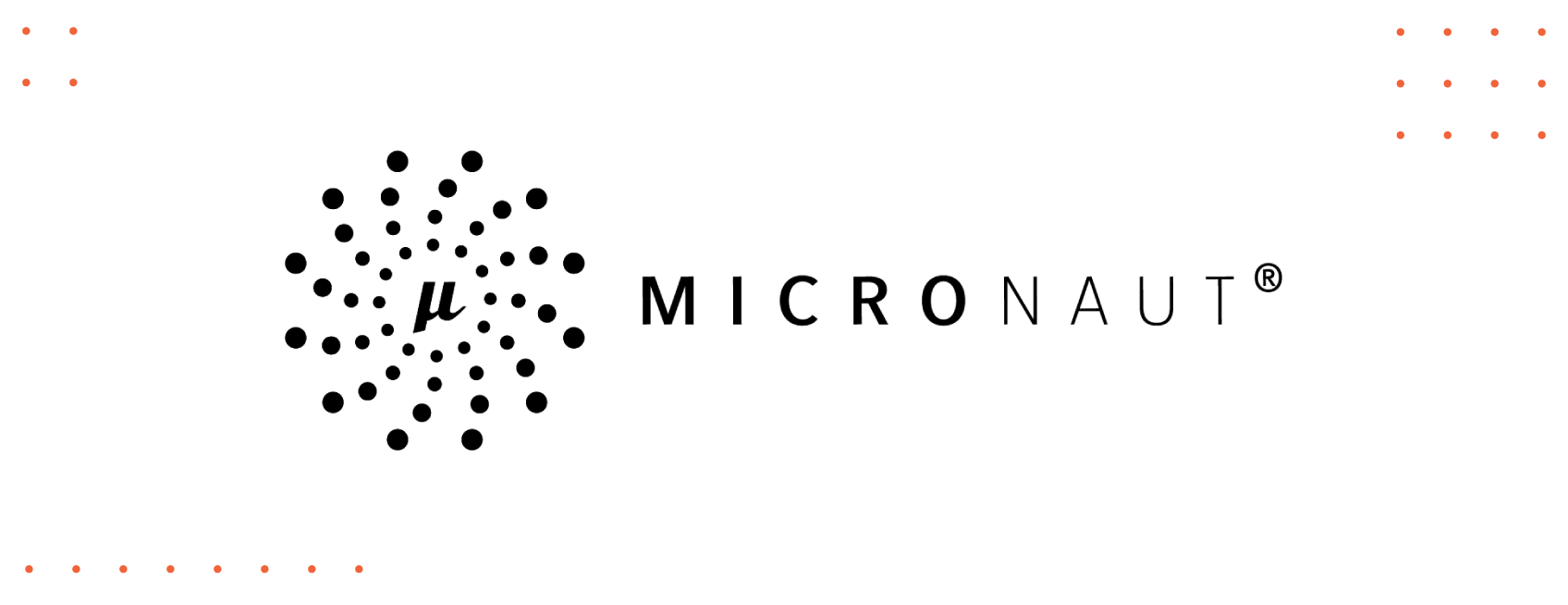
Introduced in 2018, Micronaut is a relatively new Java framework that has quickly gained popularity for its original approach to Java application development. Micronaut is based on a fast, lightweight runtime environment designed specifically for serverless and cloud-native applications. It uses a compilation-based approach to generate optimized code at the build stage. This methodology significantly reduces startup time and minimizes memory usage at runtime. In addition, Micronaut’s modular architecture enables various features, including security, data access, and serverless functions. Thus, Micronaut is well suited for building cloud-native applications.
Micronaut is suitable for a wide range of projects, especially those that require fast startup times and minimal memory overhead. Its strengths are evident in serverless and cloud-native applications and traditional monolithic applications that prioritize high performance and low latency.
| Advantages | Disadvantages |
|---|---|
| ● swift startup time ● minimal memory usage ● modular architecture | ● smaller community of developers ● steeper learning curve |
Used by: Bunch, Trade Republic, WhenThen, Agora Pulse, Loggi.
When you should switch from one Java Framework to another
Practical advice: things to think about before you jump in with your head
It is necessary and possible if sufficient resources are available. It is worth bearing in mind that switching to new technologies will require time and money to pay specialists. Carefully analyze the costs and benefits to outline the whole picture for yourself and all decision-makers.
It will take time to switch from one framework to another. If the specialists on your internal team do not have the appropriate competencies, it will take time to learn the new framework. Sometimes, it is reasonable to hire new developers who already have experience with the new framework. If that’s the case, an outsourcing vendor is a great option: you hire an expert for the period necessary to complete the task while relieving yourself of worries related to office space, benefits, taxes, constructive dismissals, etc. If you have to maintain an existing platform while creating a new one, extra hands can’t hurt. More information you can read in our offshore Java developer guide.
In the case of a complete migration to a new platform, it will take time to re-implement existing features. This, of course, is money you will spend on what you already have. The downside is that the delivery of new features will have to be delayed. The CEO has a valid question: Is it worth giving up possible profits by improving those stacks? The new framework can be much better at development, which will pay for the resources spent on replacing it fairly quickly.
You have a technical debt, and when few people in the team know how a particular product honor works, except for a couple of guys who are already out of your team, it will take you quite a while to untangle this tangle and reweave it into understandable and workable code. With the move to the new framework, you will have a chance to eliminate technical debt.
However, you are starting with a clean slate, with a framework that will definitely give you more, including integration with great new libraries, plus decreasing development time for new features. For sure you will be satisfied with its better performance.
Cases when migration from one framework to another is a must
It happens your project becomes bigger, requiring more time to add or update a new feature. When the implementation time of new features becomes unacceptable, it’s time to switch from your framework. It’s one of the most common scenarios. Before we go further, you must understand when diving into transformations clearly. There are three typical cases when moving changes are reasonable.
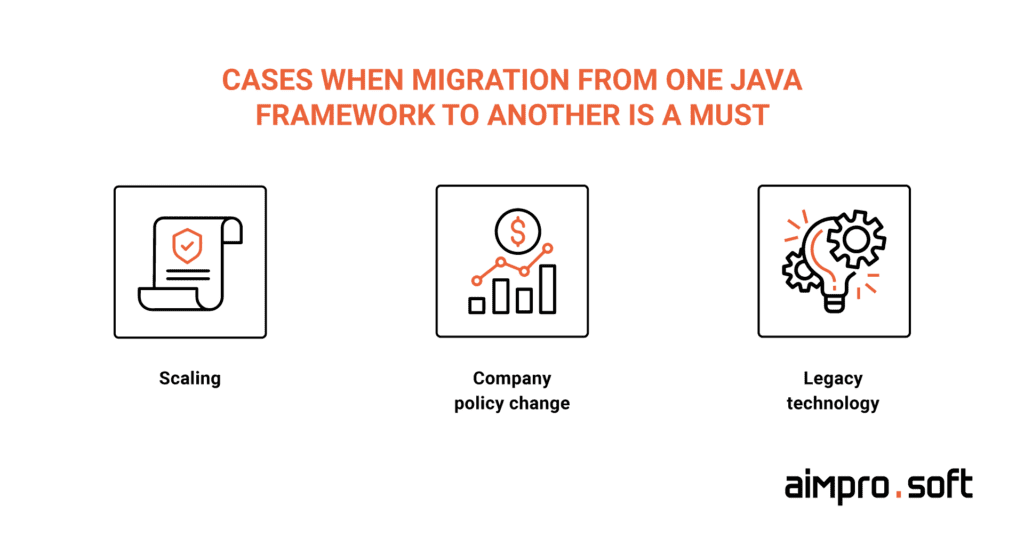
- Scaling. The natural process of developing any product is to scale it. At the initial stage of entering the market or implementing a solution in an organization, it is designed for a certain amount of load in the form of the amount of traffic and web page loads. As the product is adopted, its popularity grows, so the initial stack may not be enough to handle the load. Typically, the project architect oversees the timely transition from one framework to another. Suppose you don’t have an architect in-house and do not plan to engage them in a permanent position. You can use Architect as a Service and hire from a vendor.
- Company policy change. When choosing a framework, priority is often given to free software, which has its own niche advantages. Over time, this product (framework) becomes popular among specialists and attracts the attention of major technology companies. As a result, the product is bought and starts to be sold. One, or the primary, fundamental aspect you once chose in your stack, changes not in your favor. Consequently, the need arises to migrate to another framework with similar capabilities but open source.
Migrating from framework to framework also becomes necessary when an application is used for public sector needs. For example, the requirements for this type of application determine the standards of software use according to secure software development practices the government demands to be followed.
- Legacy technology. Technology come and go. Often tech leaders waver to replace or maintain outdated software, which is the best framework in Java to choose. However, contending with legacy technology is a tough sell. Staying and supporting out-of-fashion software when there are almost no specialists left on the market who can do something with it is obviously a road to nowhere. The optimal solution is definitely to switch to a new framework of the latest generation. The only stability in the development of technology is their constant change each other, which makes it necessary to keep a hand on the pulse.
How microservice architecture makes migration less painful
The growth of a monolithic architecture is one of the often cases to move to a microservice architecture (or service-oriented architecture). The shift to microservices-based cloud applications is common today. 85% of large organizations with 5,000+ employees used microservices in 2021.
How do microservices help with framework migration?
Due to its separation into more minor services, when each of those services typically runs a unique process and manages its own database, you can quickly scale, speed up, and reduce the iterative development cycle of services. When you migrate from one framework to another, you can rewrite the system on a per-service basis.
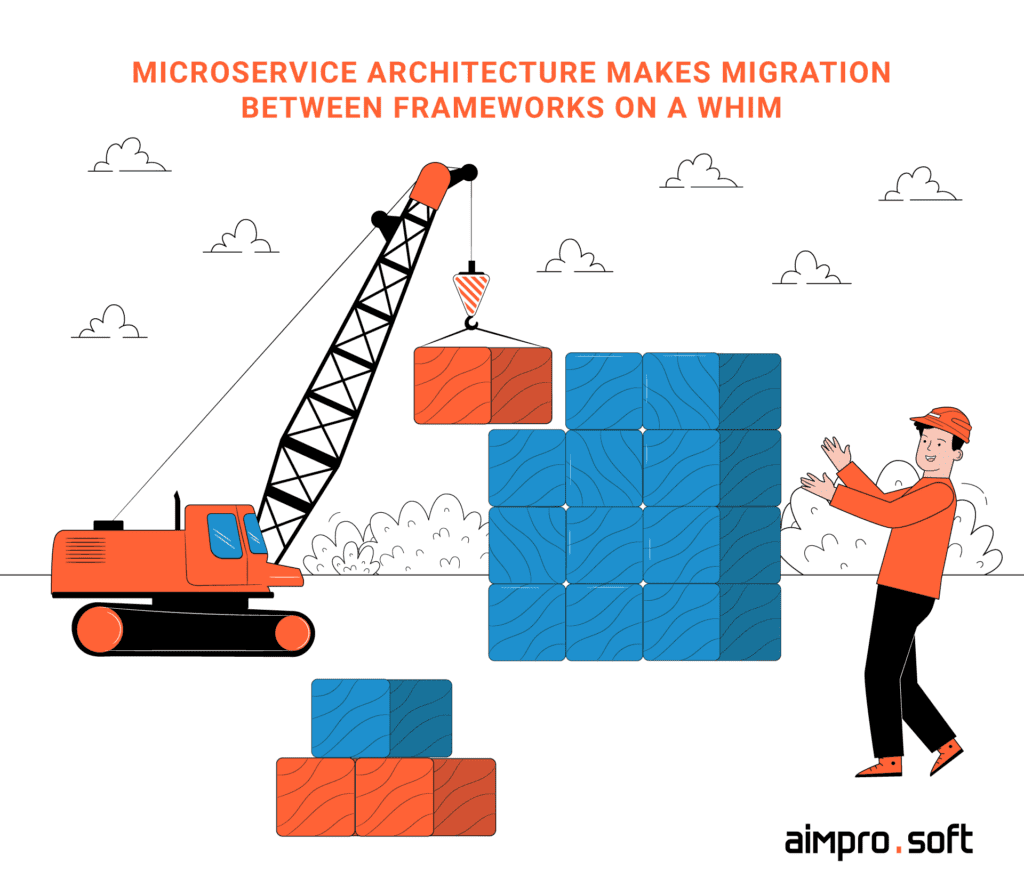
For example, Netflix currently has over a thousand microservices. They manage and support individual parts of the platform while developers regularly deploy code (the number of deployments can reach several thousand a day). Such an approach allows making updates partially. This will not be as painful and excruciatingly long as with a monolith. You rewrite one service, replace the old one with the new one, deploy it, and the project with the old code, and the new code is continuously running.
Today we are ready to take your challenge. Let’s do it.
CONTACT USWhat Java framework can Aimprosoft advise for your project?
“What is the best framework for Java web development?” our clients are interested when they approach us. It depends on many factors, such as:
- on-default features like profound library/libraries, tools;
- project scalability potential;
- project client-side technologies;
- a necessity in free or readiness for paid software solutions,
- etc.
For Java projects, we recommend Spring because it can do many things out of the box. The Spring Universe consists of 21 different active projects. Spring is the most widespread. It has the largest community, which means there’s a lot of interest in its development—a vast number of services and a lot of libraries, which are constantly updated.
Spring usually covers all web application development tasks in Java for both small projects and enterprise-level tasks. Additional microframeworks can always be connected to realize individual and unique tasks. While Spring comes as a high-speed template, additional Java libraries for web development are used for exceptional cases.
For example, some Java web frameworks are responsible for REST APIs or databases. If you want to make a high-speed application, there are better solutions than using a framework with databases because it will consume a lot of operational resources.
In case you want to create a web application for a medium-sized system without a heavy load, combo Spring and add-on modules are sensible. Again, the main advantage of using the popular frames is the flexibility of changing your team up and down: it is always easier to change the developer or vendor without damaging the project, as every Java software development company usually has specialists with Spring development experience.
There is an opinion that using open-source software in enterprise applications is not customary. The banking, legal, government, and medical industries rely on software released under a commercial license. However, it’s different. For more than 17 years, we have been working with Java-based web products such as Hybris, Alfresco, and Liferay, based on open-source Spring. These products come with paid and free versions of eCommerce solutions for wholesale sales, business process management (BPM), and electronic content management (ECM), as well as scalable content management under a structured role hierarchy (Digital Experience Platform).
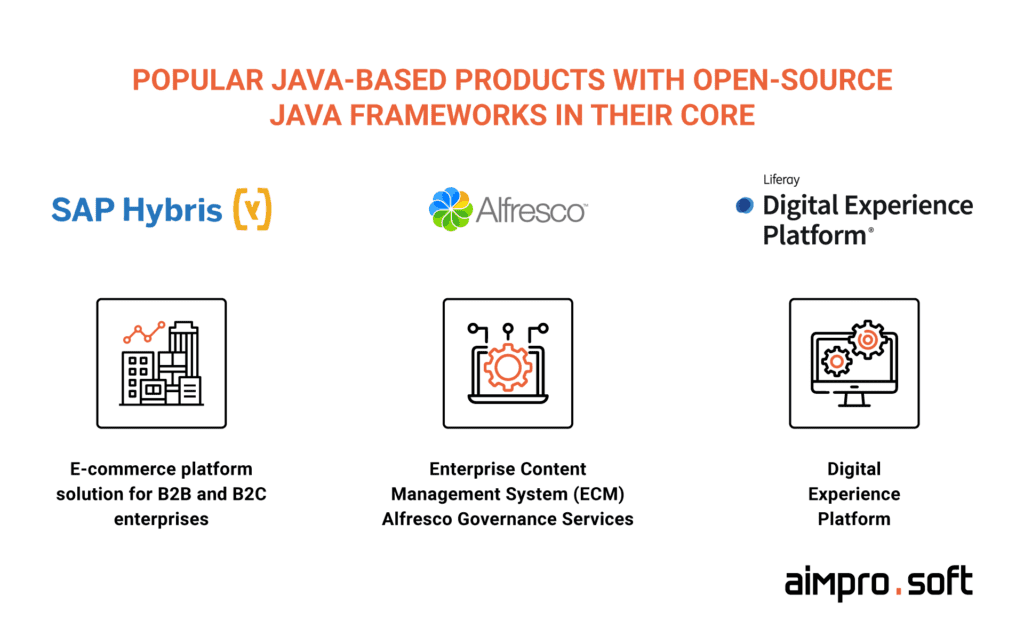
There is an opinion that it is not customary to use open-source software in enterprise applications. The banking, legal, government, and medical industries rely on software released under a commercial license. However, it’s different. For more than 17 years, we have been working with Java-based web products such as Hybris, Alfresco, and Liferay, based on open-source Spring. These products come with paid and free versions of eCommerce solutions for wholesale sales, business process management (BPM) and electronic content management (ECM), as well as scalable content management under a structured role hierarchy (Digital Experience Platform).
Let’s discuss it with our Java tech lead. We’re sure we can get out of this.
CONTACT USConclusion
If you are looking for the best framework for web application development in Java to implement key features more efficiently and reliably, establish client-server communication, or implement a decent full-stack union, any of the above will do. Contact us today to get a top Java developer level in delivered results.
FAQ
What is a Java web framework?
The Java Web Framework provides a structured and standardized way to develop web applications using the Java programming language. It is a collection of libraries, components, and tools that simplify common web development tasks such as HTTP request handling, session management, routing, template creation, and database integration. Java web frameworks promote code reusability and modularization and follow established design patterns that improve productivity and maintainability.
Which framework is most widely used in Java?
The answer is definitely Spring. It leads to Java development outsourcing in the fastest and easiest way. It is a comprehensive ecosystem for building Java applications, offering dependency injection, AOP, MVC, data access, and more features. Spring’s popularity is due to its versatility, broad community support, and widespread adoption in enterprise development.
Will it work if I have two frameworks in the same project?
You can target multiple frameworks in a single project with one leading framework. As usual, extra frameworks are welcomed to solve specific tasks beyond the primary ones. For example, Play Framework follows the MVC architectural pattern being written in Scala and usable from other programming languages compiled to JVM bytecode.
What are the types of frameworks for active websites?
Professionals define each type of Java framework for web development by function or the underlying coding language they add to it. Here are some of the most popular types:
- web app framework;
- mobile app framework;
- technology framework;
- enterprise architecture framework;
- database framework;
- testing framework.
What is the importance of Java frameworks?
Java frameworks are important for performance, standardization, efficiency, community support, and scalability. They simplify development, promote best practices, improve performance, offer community resources, and provide application scalability in the context of Java for web development.




